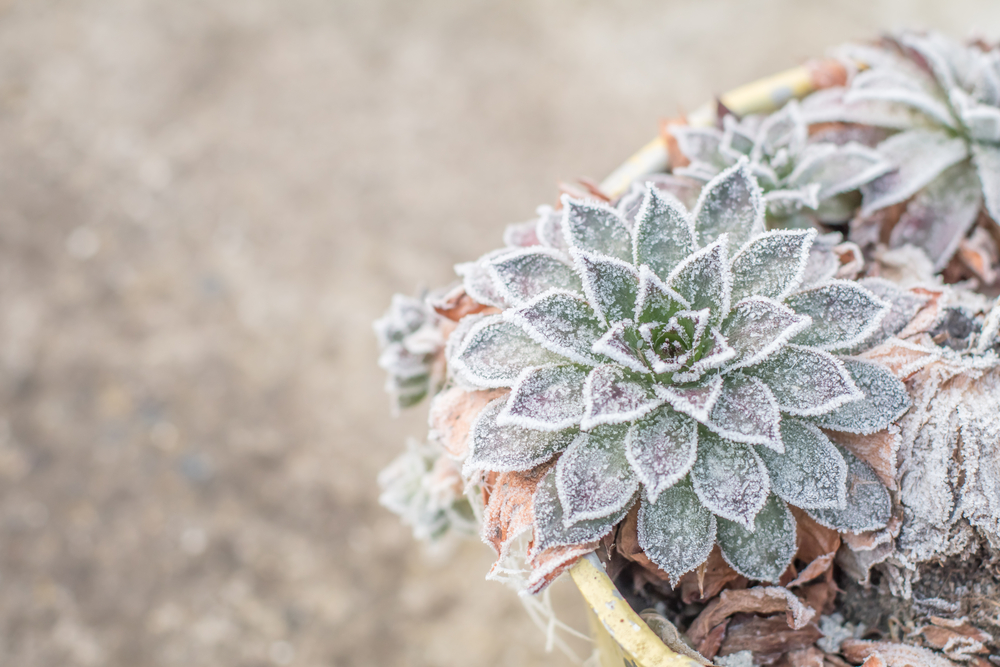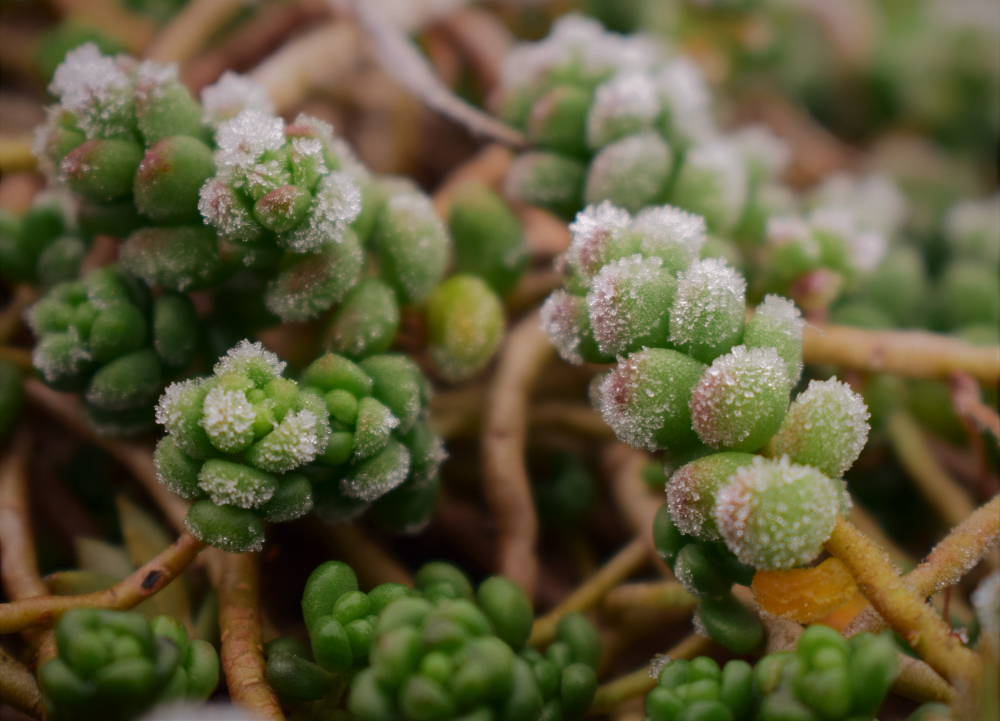Succulents, with their unique shapes and ability to store water, are a favorite of many gardeners. But when faced with frost, how do they react? Which ones can withstand freezing temperatures? Which ones absolutely must be sheltered during the winter and sometimes even from the fall? Explanations and advice.
Ah, succulents! These botanical wonders have captured the hearts of many plant lovers thanks to their special aesthetic and ease of maintenance. Originating from various corners of the world, their resilience to climate challenges differs greatly. While some can courageously brave the frost, others are much more sensitive at the slightest drop in temperature.
Are succulents frost resistant?
Succulents, also called succulents, include a variety of plants adapted to retaining water, whether through their leaves, stems or roots. The ability of these plants to withstand frost varies greatly depending on several factors, including their origin and species. For example, succulents native to desert or tropical climates, such as Most species of Echeveria or Aloe vera tend to be very sensitive to frost. On the other hand, certain succulents that come from mountainous regions or more temperate climates can better tolerate low temperatures or even light frosts.
A succulent’s ability to withstand cold depends not only on its origin, but also on the depth and duration of frost. A light night frost can be tolerated by some plants which, however, could be damaged by a frost that lasts several days. Among the frost-resistant succulents, we can cite Sempervivum, commonly called houseleek, native to the mountains of Europe. Many Sedum species, especially those in temperate regions, are also able to tolerate frost. Some species of racket cactus of the genus Opuntia also surprise with their resistance to frost, being able to survive even when temperatures drop well below zero.
When to bring succulents indoors?
Most Succulents Begin to Feel Stress when nighttime temperatures drop below 10°C. So as soon as the weather forecast calls for temperatures regularly approaching this limit at night, it’s wise to start considering moving your plants indoors; a frost announced being a clear indicator that sensitive succulents should be protected by being placed indoors.
If your plants spent a lot of time outdoors during the summer, gradually acclimating indoors can help avoid heat or light shock. Before bringing them indoors, take the time to carefully inspect your plants and their pots for the presence of pests, as insects like mealybugs or mites can find the interior particularly welcoming and proliferate. Once indoors, your succulents’ water needs will likely be reduced since evaporation conditions are different. Additionally, succulents tend to grow more slowly in winter. If you can, avoid subjecting them to drastic change going directly from a sunny exterior to a shady interior; a smooth transition would be more beneficial. To help you, here is also a list of the most sensitive succulents to bring in before winter and those which can be protected if necessary, spending the cold season outside.

Succulents to bring in before winter:
- Echeveria: Although hardy in appearance, most Echeverias are sensitive to cold.
- Aloe vera: These plants are beautiful and beneficial, but do not tolerate frost well.
- Crassula ovata (jade tree): They prefer warmer environments and must be protected from the cold.
- Kalanchoe: These colorful plants are also sensitive to cold.
- Senecio rowleyanus (string of pearls plant): They are delicate and must be protected from frost.
- Haworthia: These small plants, which often resemble Aloe, are also sensitive to cold.
Succulents that do not fear frost:
- Sempervivum (houseleek): Very robust, they can withstand temperatures well below zero.
- Sedum: Many species of Sedum, especially those in temperate regions, are cold hardy.
- Opuntia (racket cactus): Some species can survive in very cold conditions, well below 0°C.
- Agave parryi: Although there are many species of agaves that require protection from frost, Agave parryi is an exception and can tolerate cold temperatures.
- Delosperma (ice purslane): This flowering succulent is generally frost-resistant.
Please note that even if certain succulents can withstand negative temperatures, they will not necessarily appreciate wet winter conditions. It is therefore important to ensure that they are planted in well-draining soil and preferably in a location where water does not tend to accumulate. Advice also applies to protecting succulents from the cold, even those known for their resistance to frost.

Read also – When and how to repot succulents: essential tips to know
How to protect succulents from the cold?
Protecting succulents from the cold is crucial if you want them to survive the winter, especially if they are sensitive to frost. Here are some tips for effectively protect your succulents from the cold :
Bringing the plants indoors:
If you have succulents in potsthe easiest way to protect them is to bring them indoors. Place them in a bright location, such as near a window, so that they continue to receive enough light.
Use a winter veil:
If you cannot move your plants, cover them with a winter veil or a non-woven fabric on the coldest nights. A useful protection to protect plants from freezing temperatures.
Mulch the soil:
Cover the soil around your succulents with mulchsuch as dead leaves, straw or wood shavings, helps protect the roots from the cold.
Attention au drainage :
Succulents don’t like having wet “feet”especially in winter. Waterlogged soil combined with cold weather can cause root rot. Make sure the soil drains well and, if possible, tilt the planting area slightly to encourage water flow.

Using bells or tunnels:
For small areas or to protect individual plants you can use gardening cloches or tunnels which act as mini-greenhouses, providing additional protection against the cold.
Water sparingly:
In winter, significantly reduce watering of your succulents. Less humid soil is more resistant to frost.
Create barriers against the wind:
Cold winds can be as harmful as the low temperatures themselves. If possible, install barriers to protect your plants from winter winds, such as partitions or windbreaks.
Choosing the right location:
If you are planting new succulents, think about their location in relation to their cold tolerance. Plant the hardiest varieties in exposed areas and the most sensitive in sheltered locations.

Read also
10 frost-resistant succulents to beautify your exterior in winter
Article updated
consoGlobe also recommends…
Source: www.consoglobe.com


